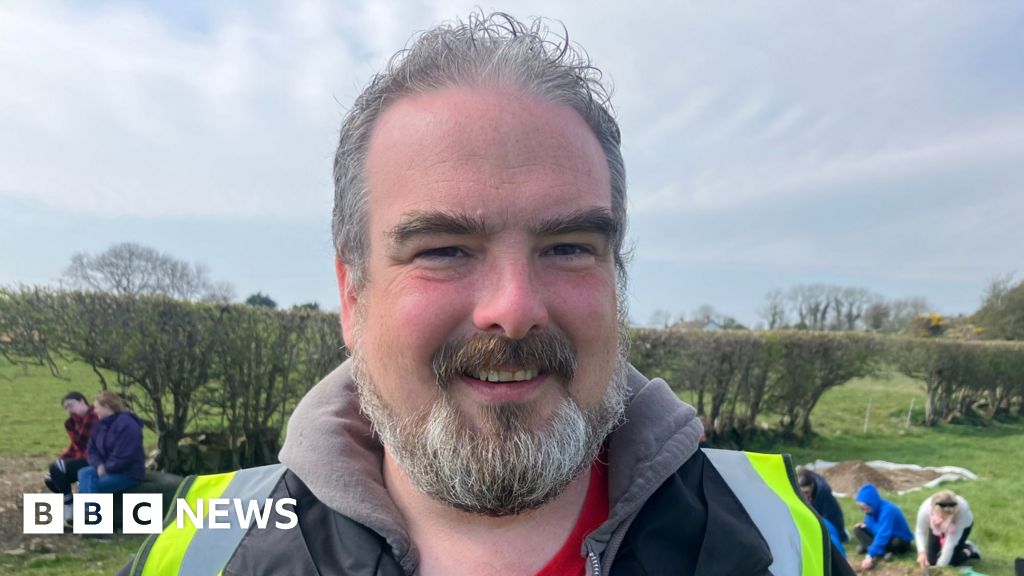BBC News NI south east reporter
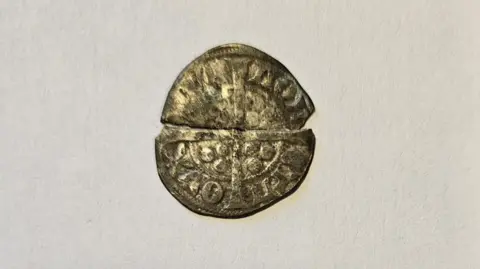 BBC
BBCArchaeologists believe they have found the site of a 12th Century monastery near Downpatrick, County Down, that was destroyed in 1177 by the Anglo-Norman knight John de Courcy.
The Cistercian monastery, known as Erenagh, had been built 50 years prior to de Courcy’s invasion of Ulster.
A community excavation of the site earlier this month found sections of wall, pottery, bone and slate, as well as a 13th Century coin.
Nearly 850 years after it was razed to the ground with its resident monks killed, the secrets of Erenagh may have been brought to the surface.
The two-week excavation was organised by the Community Archaeology Programme Northern Ireland (CAPNI) and offered a host of local school groups and aspiring Indiana Jones’ of all ages and backgrounds the chance to work as an archaeologist.
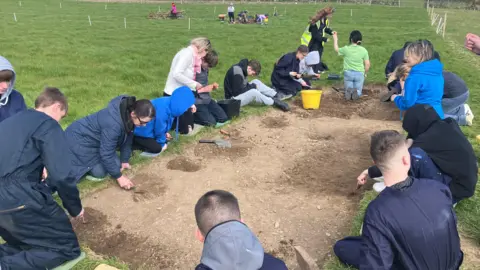
Erenagh’s importance for Irish archaeology
Brian Sloan, from Queen’s University Belfast who was helping to guide the team, said Erenagh’s significance was in it being one of the first Cistercian monasteries in Ireland.
“They took a European model, so if you think of the old Irish monasteries like a Nendrum, you’d have a round tower with your church in the centre.
“But with this you’d have a cloister. That’s a series of buildings around the church that feed into the monastery.”
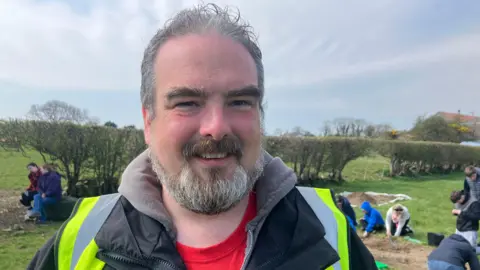
Originally built in 1127, the monastery operated for half a century before John de Courcy destroyed it.
Mr Sloan said he later built the cathedral at Inch Abbey as “an act of penance” and made that into a Cistercian monastery.
The ruins of Inch still stand on the other side of Downpatrick and, in recent years, were a major filming location for Game of Thrones.
Last year, a geophysical survey found that the Erenagh field, which is located just a few hundred yards from Ballynoe Stone Circle, was filled with anomalies.
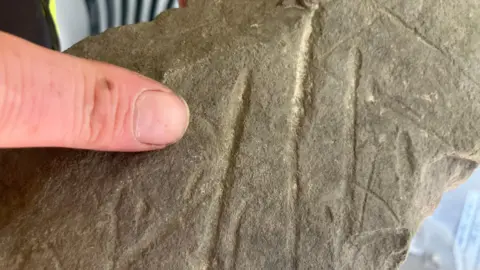
Three trenches were selected for excavation with volunteers digging, scraping and brushing deep into the earth in search of evidence.
Among them were a group from South Eastern Regional College’s Skills for Life and Work course, led by Anne Murphy.
“The course is an opportunity for students to gain GCSEs where the school system hasn’t been able to help them do that,” she said.
“We’ve 14 students here, which is the biggest attendance all week as everyone is very excited – some are looking for bars of gold.”
What did people find at the suspected monastery site?
Bars of gold may have proven elusive, but the group did make finds.
Among those in the trench was Billie, who said she’s been interested in archaeology since childhood.
“This is my second dig and I’m loving it,” she said. “I’ve collected fossils and crystals since I was about nine.
“We’ve found a few bits of slag and slate so far.”

Also in the trench was Eoin, who said: “We’ve found bits of slate which were the roof tiles so we’re hoping to find more later on.
“I’ve always had an interest in palaeontology, but this is my first dig.”
In a separate trench further up the hill are friends and volunteers Valerie Shearer and Janice McHenry, who were deep in competition to find the best artefact.
“My most interesting piece is a little bit of stone, but I haven’t got it checked yet so I don’t now if it is valuable or rubbish,” said Valerie.
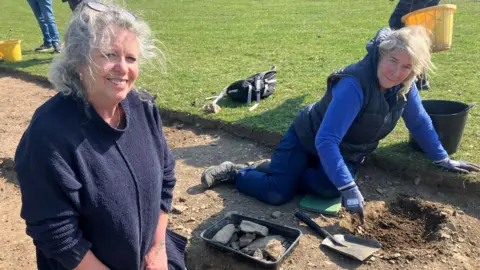
“I’d love to find a piece of pottery, but she beat me to it,” said Janice. “It is very therapeutic because you aren’t thinking of anything other than finding something.”
Among the finds at the dig were a section of wall, cut stones with a masons mark, pottery, slate and a Henry III coin dating from around 1270.
Organisers of the dig will now study the findings, but they say they are confident radiocarbon analysis of the artefacts will confirm this was the location of Erenagh’s long lost monastery.
